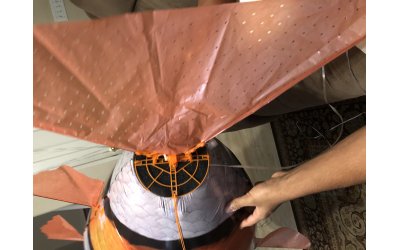Initial Testing of Different Envelope Shapes Using Flapping Technology
Pranav Sankar Srinivasan foray IRThe past few days, I have worked on implementing a pre-built flapping technology on helium balloons of different shapes and sizes running tests with them. Although the experiment did not go as planned (for reasons I will discuss later), I will discuss what did occur as I ran my first iteration of this experiment.
The technology that was used for this kit comes from an Air Swimmers indoor blimp kit shown below.

Figure 1

Figure 2

Figure 3
Simply put, a remote controller emits an infrared signal to the receiver which in turn turns an actuator that is attached to the rear side of the balloon approriately and sways a paper fin side-to-side to move the blimp forward. This motion is displayed in Figure 4.
Figure 4
Once this blimp was set up, I tested how fast it can traverse its way from one end of my living room (the couches) to the other end (the television). I repeated this process 10 times and recorded the data. I then moved on and attached the flapping mechanism to the other balloons I had only to find out that the mechanism was too heavy! The set up and results are shown below.

Figure 5
Figure 6

Figure 7
Figure 8

Figure 9
Figure 10
I was unfortunately unable to calculate the weight limit of each blimp beforehand due to Party City not providing information on the purity of the helium pumped into the balloons used. For my next iteration of the experiment, I will buy larger balloons (where the size is similar to the size of the fish balloons) of varying shapes and then run the same tests I ran with the fish balloon on the new balloons.